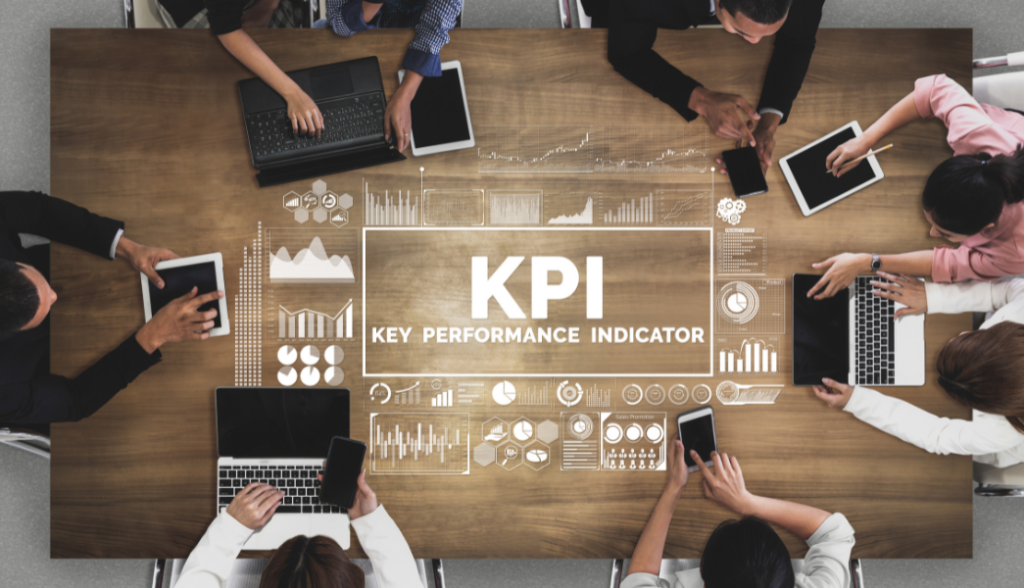
5 Critical Mortgage Lending KPIs Loan Officers & Mortgage Brokers Need to Track
Creating a thriving mortgage business requires ongoing effort. Successful business owners and managers understand the importance of measuring and evaluating specific metrics and adjusting based on your results.
If you’ve been making decisions based on instinct, you may have wondered why things haven’t worked out as you had hoped. The switch from emotional to data-driven decision-making can significantly impact your overall success.
The following guide discusses some key mortgage lending KPIs that will help you understand what’s going on in your business.

What is a KPI in Mortgage Lending?
Key performance indicators, or KPIs, may not be a part of the standard mortgage vocabulary, but they are critical for managing your mortgage business. The term refers to metrics used to measure business performance against business objectives. Each industry and company may have different goals, making it necessary to have unique KPIs.
In the mortgage industry, your KPIs can help you understand where your business is currently and how it’s trending. This can also bring to light specific changes you need to make to your business plan to improve profitability and achieve other measures of organizational success.
5 Key Performance Indicators for Mortgage Lending
There are over 100 mortgage lending KPIs that you can use to measure the performance of your mortgage loan originators, fulfillment personnel, and specific branches. However, focusing on just a few can help your pipeline management and improve your overall performance. Here’s a look at five of the most important KPIs every mortgage professional should consider tracking.
1. Average Cycle Time
Your average cycle time is a simple KPI but also critical. This measurement can give you a birds-eye-view of your overall efficiency, and it’s calculated using the following formula:
(Total Days from Application to Funding for All Loans) / (# of Loans Funded Over Same Period)
The resulting number shows you how long it takes to close a loan: from when the application is submitted to when the loan is funded. Excessive cycle times can impact the buyer experience and often correlate directly with your fallout rates and loan profitability metrics. Long cycle times can also damage your reputation and sour relationships with referral partners.
Cycle Stage Length
If your average cycle time is longer than you would like, you can evaluate it further by calculating your cycle stage length. This helps you see how long your loans spend in each cycle stage and evaluating this may help you identify the source of the problem.
To calculate cycle stage length, divide the number of days each loan spends in a particular stage by the total number of mortgages funded over the same period. Repeat this calculation for each stage in the process until you can pinpoint the issue.
2. Pull-Through Rate
The pull-through rate is a mortgage KPI that measures your pipeline efficiency. To calculate this, use the following formula:
(# of Funded Loans) / (# of Applications Submitted Over Same Period)
To help clarify this important KPI, consider this example. If 100 potential borrowers complete applications and 75 of them are funded, you have a 75% pull-through rate. Conversely, you have a 25% fallout rate, the percentage of loans that fail to close.
Your pull-through and fallout rates can help you evaluate your workflow efficiency and may give you insight into important factors such as the quality of your customer service, your interest rate competitiveness, and the quality of the applications submitted. The higher your pull-through rate, the more efficient your process is and the more revenue you stand to make.
3. Average Mortgage Loan Value
Your average mortgage loan value is one key indicator of your loan profitability, and it’s calculated using the following formula:
(Total Loan Volume Originated) / (# of Loans Funded in Same Period)
It’s critical to evaluate this KPI because the amount of time and effort needed to process a $200,000 conventional loan is not much different from that required to process a $450,000 conventional loan. However, each of these loans generates a significantly different amount of revenue.
Ideally, you will want a more significant number of your funded loans to be as close as possible to the conforming limit. The further away the bulk of your loans are from this limit, the less revenue you will generate and the smaller your profit margins will be. Over time, this can affect your ability to scale your mortgage business.
Profit Per Loan
While the value of your loans is important, your profit per loan may be a more telling KPI. This is calculated by subtracting your total production cost from your total business revenue, then dividing it by the total number of loans funded over the same period. If your profit per loan is low, the problem could be due to low average loan values or high cost per unit.
Carefully reviewing your average mortgage loan value and profit per loan over the past year can help you gauge the likelihood of growing your business if you continue with the status quo.
4. Cost Per Unit Originated
Your cost per unit originated measures how efficient your operation is compared to factors like your cycle times, pull-through rates, office expenses, and staffing. To calculate it, use this formula:
(Total Business Expenses) / (# of Loans Funded Over Same Period)
The results of this calculation will show you how much it costs to process a loan application and obtain funding. If your costs are too high, this will reduce your profit on the revenue you generate.
Ineffective hiring is a common problem that increases the cost per unit. This could result from hiring staff before you have enough revenue to offset their salaries or waiting so long to hire staff that your cycle times become excessive. Many other factors can increase your overhead costs, making it critical to examine all of your business expenses regularly closely.
5. Application Approval Rate
The application approval rate is a mortgage KPI that can give you some insight into your loan application and client acquisition workflows. It’s calculated by using the following formula:
(# of Approved Applications) / (# of Submitted Applications)
If this KPI is below the industry average, you may have issues with your document gathering or application review process. You may also have a problem acquiring borrowers who fit your ideal customer profile, which can lead to many unqualified borrower applications. When your application approval rate is low, this is an indication that your organization is wasting valuable time and money on processing dead-end applications.
Abandoned Loan Rate
It’s also helpful to review your abandoned loan rate. This is calculated by dividing the number of approved applications not funded by the total number of approved applications over the same period.
If this number is high, it can indicate that you have some issues with your post-application process. In this case, it is essential to evaluate why borrowers who qualified and were approved chose to abandon their loans. Possible factors include communication issues or a change in your interest rate competitiveness.
Incomplete Application Rate
The incomplete application rate is another KPI to consider, allowing you to measure the number of closed applications due to missing documentation or incomplete information. To calculate this mortgage lending KPI, divide the number of applications closed for incompleteness by the total number of applications received.
A high percentage of incomplete applications indicates that something is missing from the loan processing stage of your workflow. This could be caused by various issues, such as problems with your communication process or working with potential borrowers who aren’t ready to move forward.

Improve Your Mortgage Lending KPIs
As you can see, calculating your mortgage lending KPIs can give you valuable insight into the health of your business and allow you to make adjustments that can lead to significant improvements. While the formulas for some of the most common KPIs have been provided above, you don’t need to calculate them manually. Today’s successful mortgage professionals harness the power of technology to keep their fingers on the pulse of their business metrics.
The reporting and analytics features included in Jungo’s mortgage tech stack allow you to quickly and easily see your most important KPIs and track the impact of changes you make in real-time. It can also help you maintain compliance with on-demand audit level reporting. See for yourself how our integrated solution can help you take your mortgage business to the next level. Schedule a personalized demo today!




